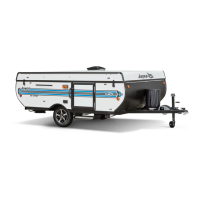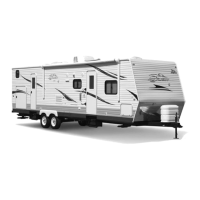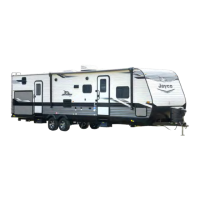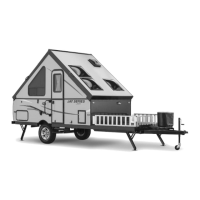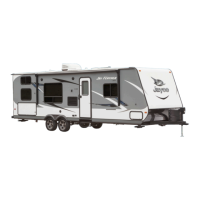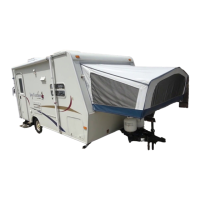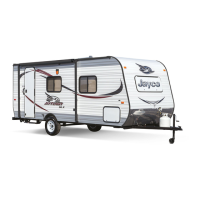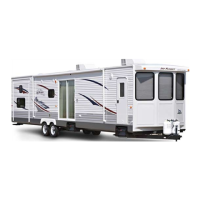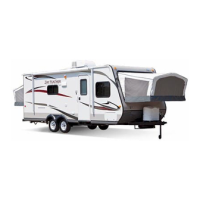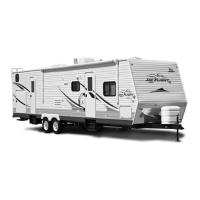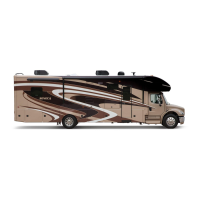For more information
Refer to the OEM operator’s manual.
PROPANE REGULATOR
The two-stage regulator has the only moving
components in the propane system. Its sole
function is to reduce the pressure from the
propane containers to a safe and consistent
low operating pressure. The first stage
reduces the container pressure to 10-13 lbs.
The second stage reduces the 10-13 lbs. of
pressure further to an operating pressure of
11” W.C. (water column) or 6.35 oz. of outlet
pressure to your appliances. The second
stage is adjustable and will need to be
adjusted by your RV dealer or qualified
propane service technician for optimum
performance (this adjustment should always
be made with a properly calibrated
manometer). If the pressure is too high, it
affects performance and safety; if the pressure
is too low, your appliances will not operate
correctly.
Your RV is equipped with an “automatic”
two-stage regulator. With both cylinders full of
propane, turn the lever on the regulator
towards the cylinder you wish to use first. This
will now be the “supply” cylinder and the other
the “reserve.” Slowly open both cylinder
valves. The indicator on top of the regulator
will turn bright green. When the cylinder
becomes empty, the indicator will change to
bright orange. Now turn the regulator lever to
the side of the “reserve” cylinder and the green
signal should return. You may now remove the
empty cylinder to have it refilled without
interrupting the flow from the full bottle. After
filling the cylinder, connect the pigtail hose and
slowly open the bottle valve.
Have the LP system checked for leakage each
time a cylinder is refilled or after any part of the
propane system has been disconnected.
For more information
Read the OEM operator’s manuals.
HOSES, PIPES, TUBES & FITTINGS
The hoses, pipes, tubes and fittings used in
your propane system are designed to
withstand pressures exceeding those of the
propane system. However, because
environment and time can both contribute to
the deterioration of these components, they
must be inspected for wear at regular intervals.
Be sure to inspect the hose before each
season and when having the tank refilled.
Look for signs of deterioration such as cracks
or loss of flexibility. When replacing the hose or
other propane components, make sure to
always replace them with components of the
same type and rating (check with your RV
dealer).
Fittings are used to connect the various
system components to each other. The P.O.L.
fitting at the end of the propane supply hose is
made of brass so that pipe sealants are not
necessary to prevent leaking. It also has a
left-handed thread, which means that it is
turned clockwise to remove, and
counter-clockwise to tighten. The P.O.L. fitting
has been designed to help restrict the flow of
LP gas in the event of a regulator failure or
hose malfunction.
USING THE PROPANE SYSTEM
32
SECTION 4
PROPANE SYSTEM
Propane regulators must always be
installed with the regulator vent facing
downward. Regulators that are not located
in baggage compartments have been
equipped with a protective cover. Make
sure the regulator vent faces downward
and (if applicable) the cover is in place to
minimize vent blockage that could result in
excessive gas pressure causing fire or
explosion.
Do not use portable fuel-burning
equipment, including wood and charcoal
grills and stoves, used inside the RV. The
use of these items inside a RV may cause
fires or asphyxiation (inability to breathe).

